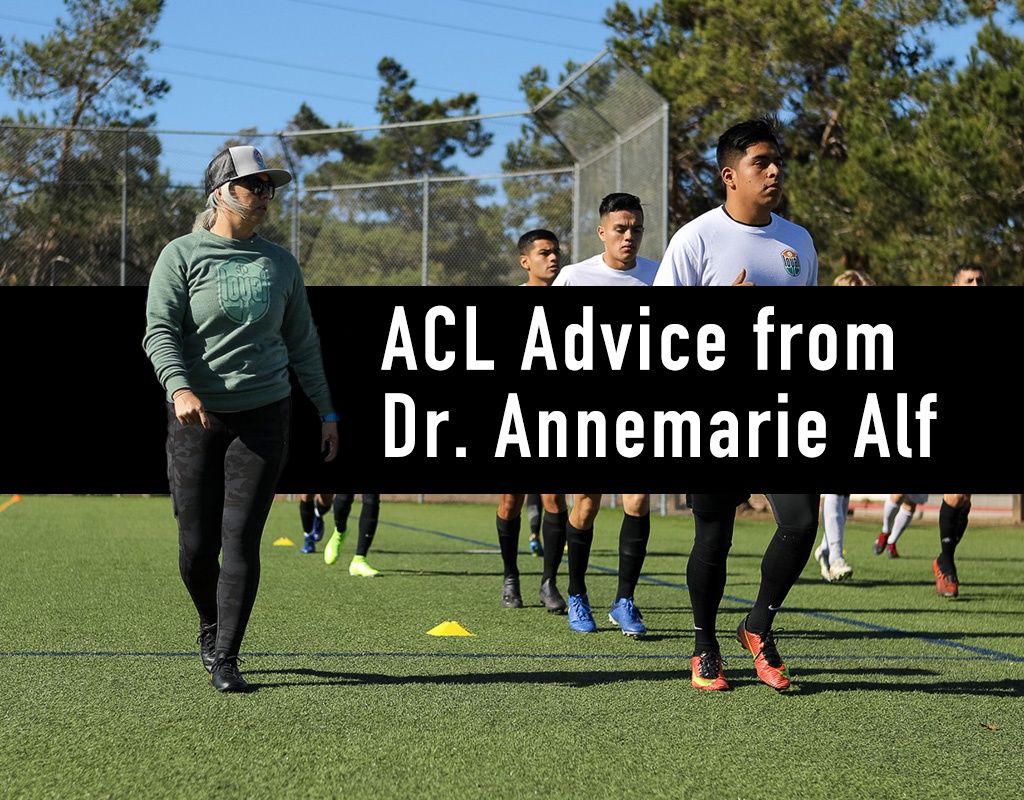See Part 1 HERE This week, Dr. Annemarie Alf continues her series on preventing ACL injuries. So many injuries seem unavoidable, and they are! We
See Part 1 HERE
This week, Dr. Annemarie Alf continues her series on preventing ACL injuries. So many injuries seem unavoidable, and they are! We’ve all heard the saying, “You could do that stepping off a curb…” However, there ARE WAYS to greatly reduce the risk of an ACL injury.
Soccer teams of all ages will take to the field again after the COVID-19 pandemic is in the rearview mirror. Players will be at high risk of injury since they haven’t had the chance, for months, to play in full competition mode at 100%.
Start using these methods and tips from San Diego Loyal Soccer Club’s head trainer, and start NOW. You will reduce your risk of picking up an injury when you hit the field again with your team.
Take it away, Annemarie…
One of the most common and yet most dreaded injuries a soccer player can endure, is to hear that you’ve torn your ACL- anterior cruciate ligament. The ACL is a ligament in the center of the knee joint that prevents the tibia- lower leg bone from sliding anterior or forward on the femur bone-upper leg bone.
This week we will look more into injury reduction strategies that should be included in your overall training program to mitigate the ACL injury risk.
**Contributing factors that CAN be changed or trained (Arendt et al and Griffin et al)
- Joint proprioception: awareness of the body in space
- Neuromuscular recruitment and muscle imbalances (quad-hamstring ratio)
- Muscle strength (both eccentric and concentric) and mobility
- Joint posture and alignment
- Resistance to fatigue
ACL INJURY PREVENTION PROGRAMS MUST INCLUDE:
- DYNAMIC WARMUP WITH GLUT ACTIVATION
- JUMP TRAINING PROGRAM
- STRENGTH AND PROPRIOCEPTIVE TRAINING PROGRAM
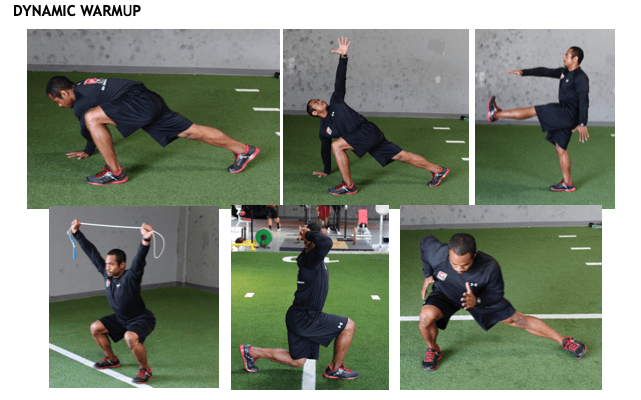
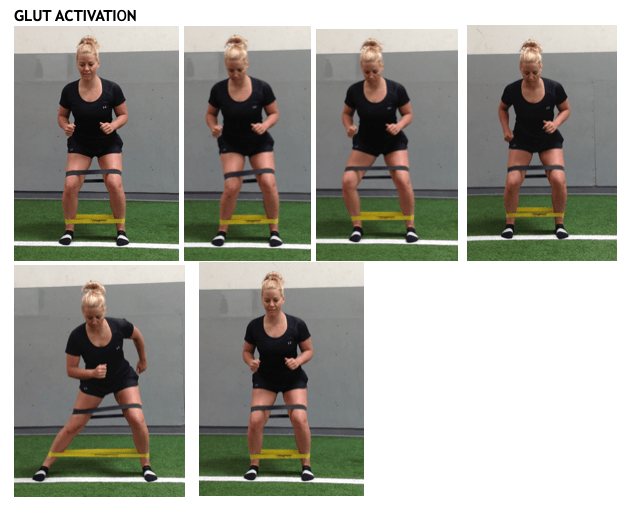
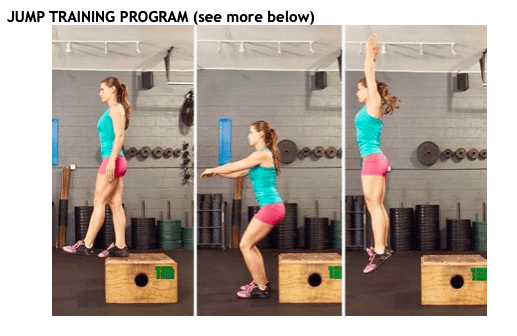
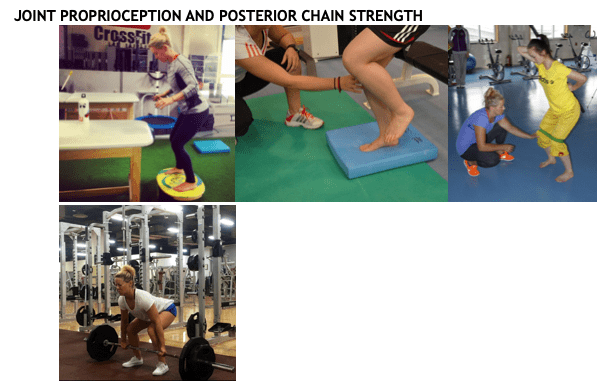
JUMP TRAINING PROGRAM OUTLINE
Prevention Plan: Jump Training Program
- PLAYERS TRAINED 6 WEEKS IN JUMPING AND LANDING TECHNIQUES, JUMPING FOR INCREASED VERTICAL HEIGHT, AND INCREASED STRENGTH
- TRAINING SESSIONS APPROX. 2 HOURS PER DAY, 3 DAYS PER WEEK, ON ALTERNATING DAYS
- 3 PHASES
Prevention Plan: Jump Training Program (Hewitt el al, 1996)
- 4 BASIC TECHNIQUES DRILLED:
1) CORRECT POSTURE (SPINE ERECT, SHOULDERS BACK) AND CORECT BODY ALIGNMENT (CHEST OVER KNEES) THROUGHOUT THE JUMPS
2) JUMPING STRAIGHT UP WITH NO EXCESSIVE SIDE-SIDE OR FORWARD-BACKWARD MOVEMENTS
3) SOFT LANDINGS INCLUDING TOE-HEEL ROCKING AND BENT KNEES
4) INSTANT RECOIL PREPARATION FOR THE NEXT JUMP
(Hewitt el al, 1996)

The Prevention Plan: Plyometric Training
Phase 1: FOCUS ON TECHNIQUE
Phase 2: FOCUS ON FUNDAMENTALS- CONCENTRATED ON THE USE OF PROPER TECHNIQUE TO BUILD A BASE OF STRENGTH, POWER AND ABILITY
Phase 3: PERFORMANCE – FOCUSED ON ACHIEVING MAXIMAL VERTICAL JUMP HEIGHT
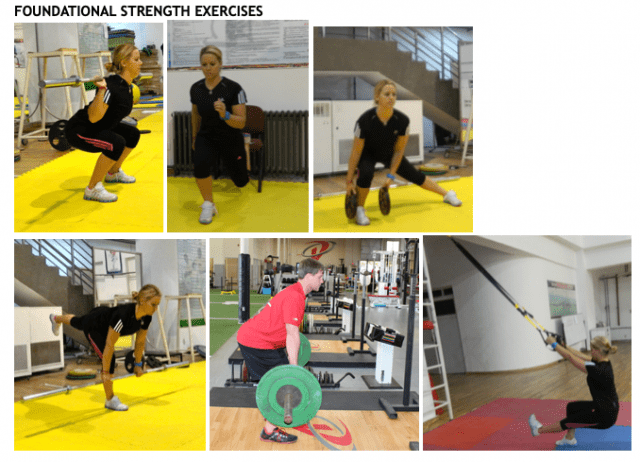
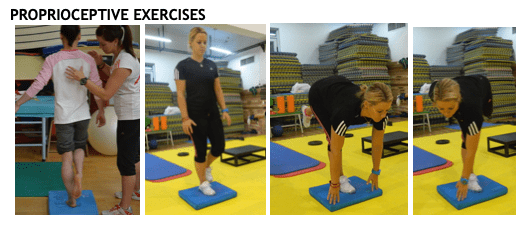
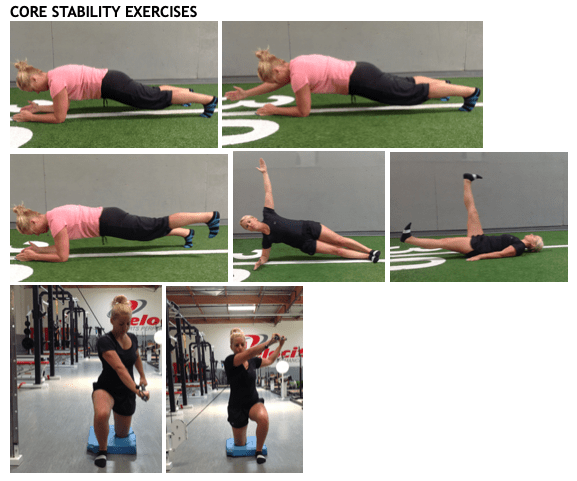
Every athletes’ training program should include this overall approach with the focus always being on proper technique and movement patterns and then adding load.
COMING UP NEXT WEEK…
Last but not least what an ACL Rehab program looks like- brief overview
